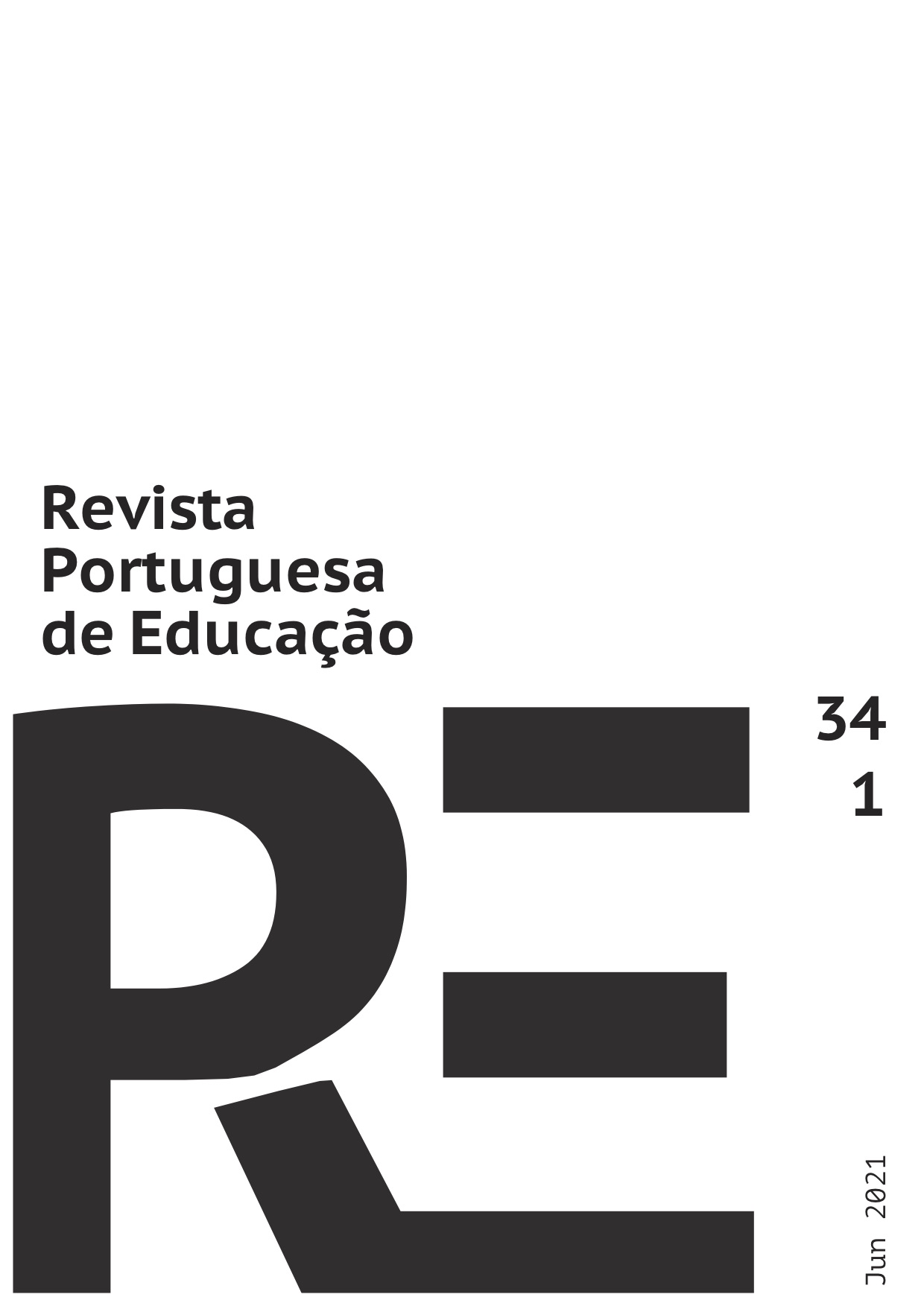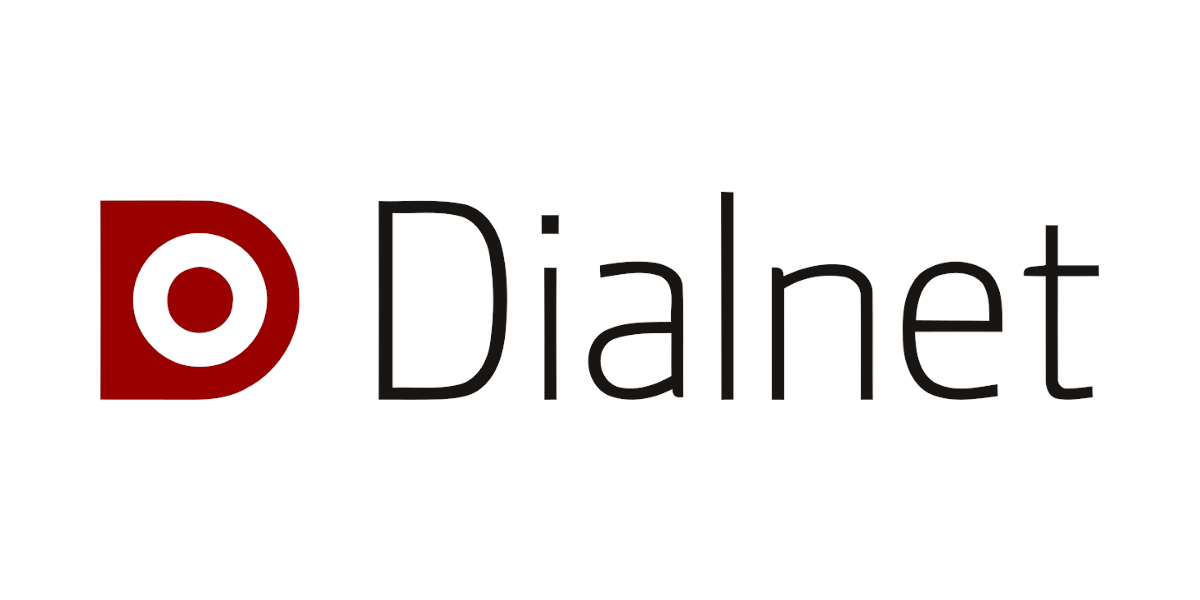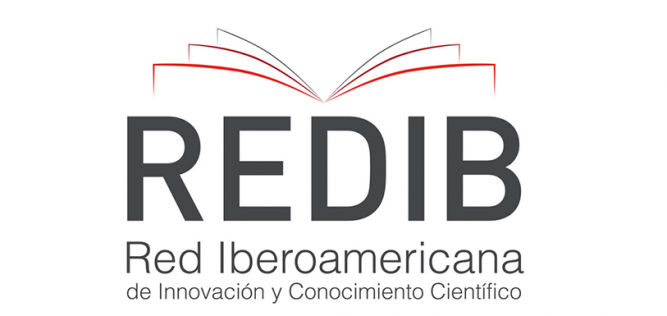Phases of implementation of blended learning in Spanish universities. Study based on segmentation analysis.
Blended Learning at Universities
DOI:
https://doi.org/10.21814/rpe.17754Abstract
The main objective of this study is to know and describe the phases of adoption of the
training modality called blended learning (BL). A survey was applied to 980 professors
from public universities throughout the Spanish state. The analysis of the data was
performed by clustering techniques for the grouping of the subjects (segmentation
analysis using the CHAID algorithm). The results show clues to understand why
university professors adopt or not this teaching modality, identifying profiles or traits
that characterize each of the subgroups grouped in each of the adoption phases (taken as
criterion variables), depending on a series of personal and professional characteristics
(Sex, Age, Professional category, Area of knowledge, Teaching experience, Attitude
toward BL, Level of Self-efficacy), and contextual variables related to Training
received on BL at the university. All of them consider as predictor variables. Indirectly,
this knowledge about the phases of adoption can provide information on the stage of
institutional diffusion of the B-Learning methodology in the whole of the Spanish
university.
Downloads
References
Alexander, B., Ashford-Rowe, K., Barajas-Murphy,N., Dobbin, G., Knott, J., McCormack, M., Jeffery Pomerantz, J. Seilhamer R., & Weber, N. (2019). EDUCAUSE Horizon Report: 2019 Higher Education Edition (Louisville, CO) https://www.educause.edu/horizonreport.
Bartolomé, A., García, R., & Aguaded, I. (2018). Blended learning: panorama y perspectivas. RIED. Revista Iberoamericana de Educación a Distancia, 21(1), 33-55.
Bartolomé, A. R. (2004) Blended Learning. Conceptos básicos. Pixel-Bit, 23, 7-20.
Becker Adams, S., Cummins, M., Davis, A., Freeman, A., Hall Giesinger, C., & Ananthanarayanan, V. (2017). NMC Horizon Report: 2017 Higher Education Edition. The New Media Consortium.
Bemposta Rosende, S., García García, M.J., & Escribano Otero, J. J. (2011). El B-Learning a Examen: ventajas, desventajas y opiniones. Higher Learning Research Communications, 1(1), 43-59.
Brown, M. G. (2016). Blended instructional practice: A review of the empirical literature on instructors’ adoption and use of online tools in face-to-face teaching. The Internet and Higher Education, 31, 1–10. https://doi.org/10.1016/j.iheduc.2016.05.001
Castro, R. (2019). Blended learning in higher education: trends and capabilities. Education and Information Technologies, 24, 2523–2546. https://doi.org/10.1007/s10639-019-09886-3.
Christensen, C., Horn, M., & Staker, H. (2013). Is K-12 Blended Learning Disruptive? An introduction to the theory of hybrids. Clayton Christensen Institute.
Christensen, R., & Knezek, G. (2001a). Instruments for assessing the impact of technology in education. Computers in the Schools, 18(2–3), 5–25. https://doi.org/10.1300/J025v18n02_02
Christensen, R., & Knezek, G. (2001b). Stages of adoption as a measure of technology integration. In C. Morales, P. Ávila, G. Knezek & R. Christensen (Eds.), Users' views of new information technologies in education: Studies from multiple nations (pp. 11-22). Instituto Latinoamericano de la Comunicacion Educativa (ILCE).
Cubides, N., & Martín-García, A.V. (2014). Los modelos formativos combinados de B-Learning. Perspectivas para la enseñanza Universitaria. In A. V. Martín (Coord.), Blended Learning en Educación Superior. Perspectivas de innovación y cambio (pp. 75-100). Síntesis.
Driscoll, M. (2002). Blended learning: Let’s get beyond the hype. IBM Global Services.
Duarte, A., Guzmán, M.D., & Yot, C. (2018). Aportaciones de la formación Blended Learning al desarrollo profesional docente. RIED, Revista Iberoamericana de Educación a Distancia, 21(1), 155-174.
Estrada Lizárraga, R. (2014). Blended-learning afectivo y las herramientas interactivas de la web 3.0: una revisión sistemática de la literatura. Revista científica electrónica de Educación y Conocimiento en la Sociedad del Conocimiento, 1(14), 1-21.
Estrada Lizárraga, R., Zaldivar, A., Mendoza Zatarain, R., Nava Pérez, L., & García Sánchez, O. (2013). Percepción de los Estudiantes acerca de la Implementación de la Modalidad Educativa Blended-Learning en la Educación Superior. Revista Electrónica de Investigación en Educación Superior, 1(1), 1-12.
Fernández-Rodrigo, L., Vaquero, E., & Balsells, M.A. (2019). La percepción de los profesionales sobre el uso de un entorno virtual como medio de soporte en el programa socioeducativo ‘Caminar en Familia. Pixel-Bit, 56, 129-149. https://doi.org/10.12795/pixelbit.2019.i56.07.
George, A. A., Hall, G. E., & Stiegelbauer, S. M. (2006). Measuring implementation in schools: The stages of concern questionnaire. SEDL.
González Aldana, M. A., Perdomo Osorio, K. V., & Pascuas Rengifo, Y. (2017). Aplicación de las TIC en modelos educativos blended learning: Una revisión sistemática de literatura. Sophia, 13(1), 144-154.
Graham, C. R., Woodfield, W., & Harrison, J. B. (2013). A framework for institutional adoption and implementation of blended learning in higher education. The Internet and Higher Education, 18, 4–14. https://doi.org/10.1016/j.iheduc.2012.09.003.
Güzer, B., & Caner, H. (2014). The Past, Present and Future of Blended Learning: An in Depth Analysis of Literature. Procedia - Social and Behavioral Sciences, 116, 4596-4603.
Hall, G. E. (2014). Evaluando los procesos de cambio. Midiendo el grado de implementación (constructos, métodos e implicaciones). REICE. Revista Iberoamericana sobre Calidad, Eficacia y Cambio en Educación, 12(4). https://revistas.uam.es/index.php/reice/article/view/2839.
Hennessy, S., Ruthven, K., & Brindley, S. (2005). Teacher perspectives on integrating ICT into subject teaching: commitment, constraints, caution, and change. Journal of Curriculum Studies, 37(2), 155–192. https://doi.org/10.1080/0022027032000276961
Hinojo-Lucena, F. J., Aznar-Díaz, I., & Cáceres Reche, M. P. (2009). Percepciones del alumnado sobre el blended learning en la universidad. Comunicar: Revista Científica Iberoamericana de Comunicación y Educación, 17(33), 165-174.
Hord, S. M., Rutherford, W. L., Huling-Austin, L., & Hall, G. E. (1987). Taking charge of change. Association for Supervision and Curriculum Development.
Horn, M., & Staker, H. (2011). The rise of K-12 Blended Learning. Innosignt Institute.
Jornet Meliá, J., González-Such, J., & García-Bellido (2012). La Investigación Evaluativa y las Tecnologías de la Información y la Comunicación (TIC). Revista Española de Pedagogía, 70(251), 93-110.
Kass G. V. (1980) An Exploratory Technique for Investigating Large Quantities of Categorical Data, Applied Statistics, 29(2), 119-127.
Kim, D., Park, Y., Yoon, M., & Jo, I-H. (2016). Toward evidence-based Learning analytics: Using proxy variables to improve asynchronous online discussion environments. The Internet and Higher Education, 30, 30-43.
Kim, Y., & Crowston, K. (2011). Technology adoption and use theory review for studying scientists’ continued use of cyber‐infrastructure. Proceedings of the American Society for Information Science and Technology, 48(1), 1–10. https://doi.org/10.1002/meet.2011.14504801197.
Lai, M., Lam, K.M., & Lim, C.P. (2016). Design principles for the blend in Blended Learning: a collective case study. Teaching in Higher Education, 21(6), 716-729.
Lignan Camarena, L. (1999). Actitudes de los alumnos y maestros hacia la computadora y los medios para el aprendizaje. ILCE, Unidad de Investigación y Modelos Educativos. http://investigacion.ilce.edu.mx/panel_control/doc/c36,act99,d2.pdf.
Llorente, M. C. (2009). Formación semipresencial apoyada en la red (Blended Learning). MAD.
López, J., Pozo, S., Fuentes, A., & Gómez, G., (2019) Análisis del efecto de la formación B-Learning en el profesorado. Estudio de caso de una cooperativa de enseñanza. Texto Livre. Linguagem e tecnología, 12(2), 98-115. https://doi.org/10.17851/1983-3652.12.2.98-115.
Loucks, S. F., & Hall, G. E. (1979, 12 Abr). Implementing innovations in schools: A concerns-based approach. [Paper presentation] Annual Meeting of the American Educational Research Association, San Francisco, CA, USA. https://eric.ed.gov/?id=ED206109.
Martín-García, A.V., & Sánchez-Gómez. M. C. (2014). Modelo predictivo de la intención de adopción de Blended learning en profesores universitairos. Revista Universitas Psichologica, 13(2), 601-614.
Martín-García, A. V., Hernández Serrano, M. J., & Sánchez Gómez, M. C. (2014). Fases y clasificación de adoptantes de Blended Learning en contextos universitarios. Aplicación del análisis CHAID. Revista Española de Pedagogía, 72(259), 457-476.
Martín-García, A.V., Sánchez-Gómez. M. C., & Gutiérrez Pérez, B. (2019a). Ejemplificación de metodología mixta para el análisis del uso de entornos blended learning en docentes universitarios. Revista Ibérica de Sistemas e Tecnologías de Información, 33, 16-31.
Martín‐García, A. V., Martínez‐Abad, F., & Reyes‐González, D. (2019b). TAM and stages of adoption of blended learning in higher education by application of data mining techniques. British Journal of Educational Technology, 50(5), 2484-2500. https://doi.org/10.1111/bjet.12831.
Means, B., Toyama, Y., Murphy, R., Bakia, M., & Jones, K. (2009). Evaluation of evidence-based practices in online learning: A meta-analysis and review of online learning studies. US Department of Education. https://eric.ed.gov/?id=ED505824.
Mengual Andrés, S., & Blasco Mira, J. E. (2006). Etapas de adopción tecnológica de los futuros docentes de Educación Primaria [Paper presentation] V Congreso Internacional “Educación y Sociedad”, Granada, Espanha. https://rua.ua.es/dspace/bitstream/10045/2895/1/Mengual-Andres-2.pdf.
Morales, C. (1999). Etapas de adopción de la tecnología informática al salón de clases. [Paper presentation] XV Simposio Internacional de Computación en la Educación. Guadalajara, México. http://investigacion.ilce.edu.mx/panel_control/doc/c36,act99,d7.pdf
Paniagua, A., Luengo, R., Torres Carvalho, J. L., & Casas, L. M. (2017). Blended learning en la formación permanente del profesorado. Aportaciones de asesores de formación sobre modalidades formativas. RED, Revista de Educación a Distancia, 17(52), 1-15.
Picciano, A. G., & Seaman, J. (2007). K-12 online learning: a survey of US school district administrators. Sloan Consortium. https://bit.ly/2TPb1o3.
Porter, W. W., Graham, C. R., Spring K. A., & Welch, K. R. (2014). Blended Learning in higher education: institutional adoption and implementation. Computers & Education, 75, 185-195.
Qasem, A. A. A., & Viswanathappa, G. (2016). Blended learning approach to develop the teachers’. TPACK. Contemporary educational technology, 7(3), 264-276.
Reyes González, D., & Guevara Cruz, H. (2009). Adopción de las tecnologías infocomunicacionales (TI) en docentes: actualizando enfoques. Teoría de la Educación. Educación y Cultura en la Sociedad de la Información, 10(1), 134-150. https://doi.org/10.14201/eks.15639 http://campus.usal.es/~revistas_trabajo/index.php/revistatesi/article/view/15639/16208
Reyes-González, D., & Martín-García, A. V. (2016). Creencias de docentes en formación que afectan el uso de recursos tecnológicos. Ciencia, Docencia y Tecnología, 27(53), 293-314.
Rogers, E. M. (2003). Diffusion of innovations (4th Ed.). Free Press.
Rooney, J. E. (2003). Blending learning opportunities to enhance educational programming and meetings. Association Managment, 55(5), 26-32.
Saga, V. L., & Zmud, R. W. (1994). The Nature and Determinants of IT Acceptance, Routinization, and Infusion. In L. Levine (Ed.), Proceedings of the IFIP TC8 Working Conference on Diffusion, Transfer and Implementation of Information Technology (pp. 67–86). Elsevier Science Inc. http://dl.acm.org/citation.cfm?id=646302.686655
Salinas Ibáñez, J., de Benito Crosetti, B., Pérez Garcías, A., & Gisbert Cervera, M. (2018). Blended Learning, más allá de la clase presencial. RIED. Revista Iberoamericana de Educación a Distancia, 21(1), 195-213.
Salinas, Á., Nussbaum, M., Herrera, O., Solarte, M., & Aldunate, R. (2016). Factors affecting the adoption of information and communication technologies in teaching. Education and Information Technologies, 22, 2175–2196. https://doi.org/10.1007/s10639-016-9540-7
Samra, A. S., Pérez, T., & Castillo, E. (2010). B-learning en el aprendizaje de inglés con propósitos académicos, a nivel universitario. Multiciencias, 10, 172-177.
Scherer, R., Siddiq, F., & Tondeur, J. (2019). The technology acceptance model (TAM): A meta-analytic structural equation modeling approach to explaining teachers’ adoption of digital technology in education. Computers & Education, 128, 13-35. https://doi.org/10.1016/j.compedu.2018.09.009
Siemens, G., Gašević, D., & Dawson, S. (2015). Preparing for the digital university: A review of the history and current state of distance, blended, and online learning. Link Research Lab. https://ictlogy.net/bibliography/reports/projects.php?idp=3138
Smith, K., & Hill, J. (2018). Defining the nature of Blended Learning through its depiction in current research. Higher Education Research & Development, 38(2), 383-397. https://doi.org/10.1080/07294360.2018.1517732
Sumak, B., & Sorgo, A. (2016). The acceptance and use of interactive whiteboards among teachers: Differences in UTAUT determinants between pre- and post-adopters. Computers in Human Behavior, 64, 602–620. https://doi.org/10.1016/j.chb.2016.07.037
Tearle, P. (2003). ICT implementation: what makes the difference? British Journal of Educational Technology, 34(5), 567–583. https://doi.org/10.1046/j.0007-1013.2003.00351.x
Trujillo Torres, J. M., & Romero Rodríguez, L. M. (2018). La metodología blended learning en educación superior: un estudio interuniversitario sobre su consolidación en la Universidad española. In R. Roig Vila (Ed.), El compromiso académico y social a través de la investigación e innovación educativas en la Enseñanza Superior (pp. 476-486). Octaedro.
Turpo Gebera, O. (2014). Perspectiva de la convergencia pedagógica y tecnológica en la modalidad blended learning. Educación, 23(44), 67-87.
Venkatesh, V., Thong, J. Y. L., & Xu, X. (2012). Consumer Acceptance and Use of Information Technology: Extending the Unified Theory of Acceptance and Use of Technology. MIS Q., 36(1), 157–178.
Zhao, Y., Pugh, K., Sheldon, S., & Byers, J. L. (2002). Conditions for classroom technology innovations. Teachers College Record, 104(3), 482–515. https://doi.org/10.1111/1467-9620.00170
Zhao, Y., Frank, K., & Ellefson, N. (2006). Fostering meaningful teaching and learning with technology: Characteristics of effective professional development efforts. In E. A. Ashburn & R. E. Floden (Eds.), Meaningful Learning Using Technology: What Educators Need to Know And Do (pp. 161-179). Teachers College Press.
Downloads
Published
How to Cite
Issue
Section
License
Copyright (c) 2021 Portuguese Journal of Education

This work is licensed under a Creative Commons Attribution-ShareAlike 4.0 International License.
1. The authors preserve their authorship and grant the Portuguese Journal of Education the right to the first publication. The work is licensed under Creative Commons Attribution License that allows sharing the work with the acknowledgment of initial authorship and publication in this Journal.
2. The authors have the right to take additional contracts separately, for non-exclusive distribution of the published version of their work (e.g. to deposit in an institutional repository or as a book chapter), acknowledging the initial authorship and publication in this Journal.
3. The authors have the permission and are stimulated to post their work online (e.g. in an institutional repository or on their personal website). They can do this at any phase of the editorial process, as it may generate productive changes, as well as increase impact and article citation (see The Open Citation Project).
The work is licensed under Attribution-ShareAlike 4.0 International (CC BY-SA 4.0)




















